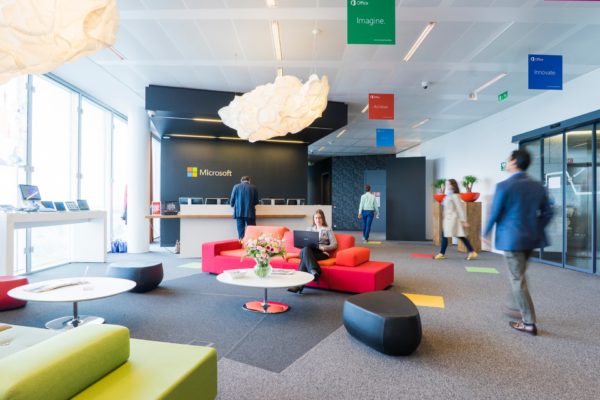If you’ve never found yourself beavering away in an uncomfortable workplace, even for just a short time during your career, well done! But most professionals, even if just in the capacity of a short-term, temporary contract, have experienced offices that just don’t work for… well… working.
Whether swinging from stiflingly hot, to feverishly cold, or simply set up to cater for as many cramped bodies as possible, office design isn’t, unfortunately a priority for every employer – even though it certainly should be. Here’s why workplace productivity can benefit from quality office design.

Lack of personal space in the workplace
Whether or not you recall the columns of identical cubicles that once resembled the archetypal office space, those thin partitions were designed for a specific reason. The scientific study of ‘proxemics’ helps to establish the distance that people are comfortable being from others, in different environments and situations.
Proxemics has proven that people consider being too close to an acquaintance (as opposed to a close friend, family member, or partner), as anything less than four feet. So, if employees are packed closer together than this, individuals are more likely to feel uncomfortable. If they’re uncomfortable, then they’re always going to be partially focused on why they’re uncomfortable, and subsequently less focused on other things – productivity included.
Open plan collaboration ineffective
So, in contract, if you’re currently planning your new office space, it makes sense to avoid close knit gaggles of desks – but there is another pitfall you should be aware of too. For many years following the death of the ‘cubicle farm’, office design seemed to be focused contrastingly on enormous, open spaces – which were not without their pitfalls.
In fact, some research has shown that productivity can actually dip, by at least 15%, when people work in large, open spaces. Problems similar to those encountered in ‘hot-desk’ offices appeared to show that open-plan offices negatively impact the memory. In open plan offices, snippets of every conversation, either internal or external, like telephone calls to clients, can be heard – and the human brain struggles to filter them out.
A study by the University of Sydney found that around half of employees in open-plan offices felt that their workplace lacked the privacy needed for full focus – and collaborative working was still a serious challenge.

A well-designed, happy medium
So, from a serious threat to personal space, to a desire for fewer airy echoes, we get to the core of what is required in good office design. A study, reported by Forbes, has proven how workplace design positively influences, health, wellbeing, employee satisfaction – and subsequently, performance.
When a consolidation of collaborative workspace, flexible working options, and pleasant outdoor and breakout spaces were combined, the study, undertaken by The Global Impact of Biophilic Design in the Workplace, reported 15% higher creativity and wellbeing – and 6% more productivity.
Intriguingly though, there was one more key facet of design involved in these statistics. Offices that included natural features appeared to make all the difference to the emotional health of employees, which in turn improved output.
So, after years of unnaturally cramped cubicle working, then eerily empty, open-plan offices, it appears that to get the most out of employees, surrounding them by natural features, including potted plants, living walls and flower gardens, can make all the difference.



